Catalan News | Symbolism and hidden meanings behind the Sagrada Família
When you look at the Sagrada Família, there’s a lot going on. The level of detail can almost be overwhelming.
There’s not one central tower or element capturing your attention, but rather there are many competing for it.
Each facade is packed with symbolism and hidden meanings, with dozens of sculptures collectively telling the story of Jesus Christ. But what does it all mean?
The ‘Bible made of stone’
The primary architect of the work, Antoni Gaudí, wanted the basilica to represent ‘the Bible made of stone,’ as explained to Catalan News by Onno Schoemaker, a tour guide specializing in the exterior design of the breathtaking piece of architecture.
During Gaudí’s lifetime, “a lot of the working class was illiterate,” Schoemaker explains, “so Gaudí wanted to tell the story of Jesus through imagery, through sculptures and visual elements, rather than through text. ” As such, each side of the structure relates to a different aspect of Jesus’ life.
The three facades in place today represent the Nativity, which is a celebration of the birth of Jesus and life and nature in general; the Passion of Christ, showing the crucifixion of Jesus and his ascension to heaven; and then there’s the Glory facade, which tells the story of the message and teachings of Christ and Christianity.
The Sagrada Família is almost like a “story book,” Shoemaker jokes, and within each facade “you get specific elements of Jesus’ life story.”
Towers
Antoni Gaudí envisioned 18 towers for the Sagrada Família, of which nine have already been built. The latest was complete on December 8, 2021, when the star that sits atop what will be the second-tallest tower once complete was lit up for the first time.
These 18 towers have a lot of meaning behind them as well, they all represent different characters from the Bible.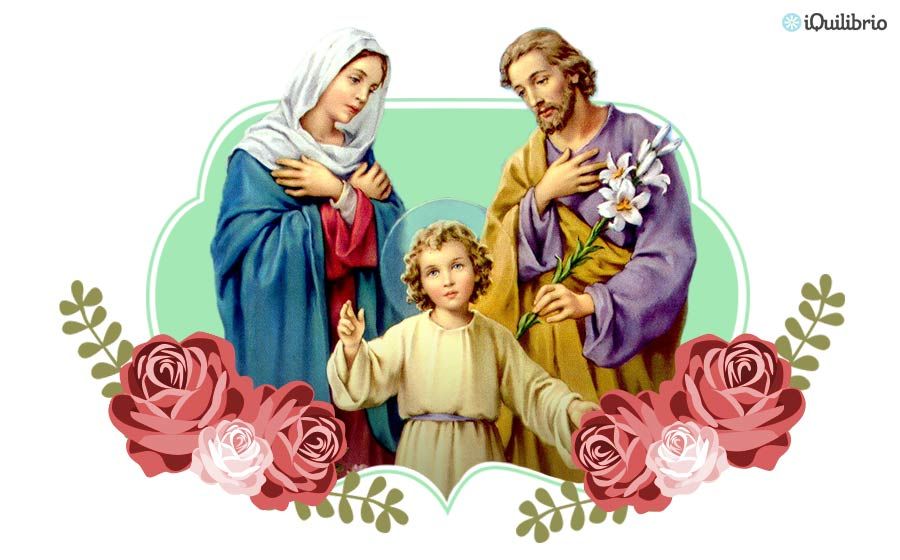
Twelve stand for Jesus’ twelve apostles, while four stand for the Evangelists, Matthew, Mark, Luke, and John, those who ascribed the Gospel. The star-topped second-tallest tower is named after the Virgin Mary, while the last tower, which will be the tallest once construction is complete, is in honour of Jesus Christ.
Once this largest one is erected, it will make Sagrada Família the highest church in the world, and the tallest building in Barcelona.
Nature
Once it’s complete, the tallest tower of the Sagrada Família will stand at a height of 172.5 metres. This is a very deliberate figure because it is just below the peak of Montjuïc, the highest point of the city of Barcelona.
Gaudí wanted to ensure that no man-made object would overtake the natural world, as he viewed this as God’s work.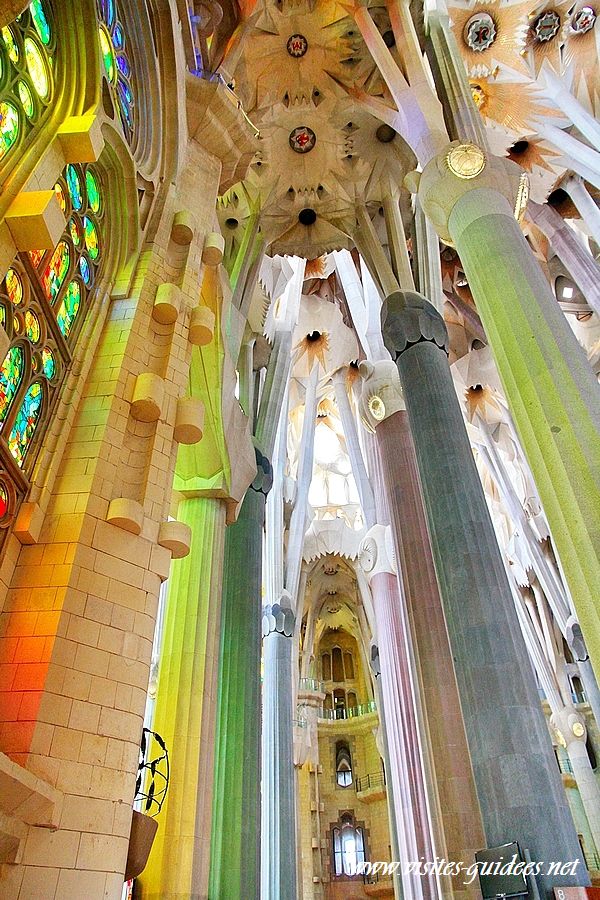
“There are different elements again when it comes to his inspiration from nature, sometimes literally,” Schoemaker explains. Gaudí would often create moulds from real-life animals, whenever possible, to use as a basis for the sculptures that would adorn the facades.
“Especially on the Nativity facade which is a celebration of life in general, there are so many little details of plants, animals, literal natural elements that were copied one-to-one precisely from real living things at the time.”
As well as that, some of the apostle’s towers are topped with colourful rounded designs. These are fruits, used as symbols to represent the fruits of the spirit and the Eucharist, the body and blood of Christ.
If you’re interested in learning more about the exterior design of the Sagrada Família, you can find Onno Schoemaker’s walking tour at SagradaFreeTour.com.
Tickets & Information For Your Visit
The Sagrada Família is the symbol of Barcelona.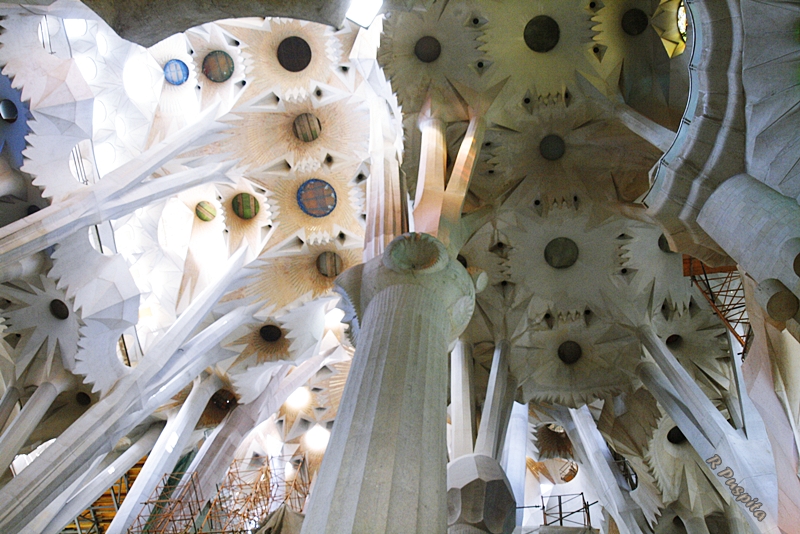
The Sagrada Familia is one of the most striking and unique pieces of architecture in the world
What you will find in this article:
- Information about tickets and tours
- Dress code during your visit
- Opening hours
- Information on how to get there
- Tips to visit the Sagrada Família for free or attend a mass
- Background information (facts, history and architecture) on the Sagrada Família
- Tips to combine the Sagrada Família with a visit to Park Güell
What is the Sagrada Família and why is it a must-visit?
The Sagrada Família (literal meaning: ‘Holy Family’) is a church in the neighbourhood of Eixample in Barcelona and the most visited monument of the city.
People from around the world especially come to Barcelona to see the basilica, some because of the architecture, others out of religious motives.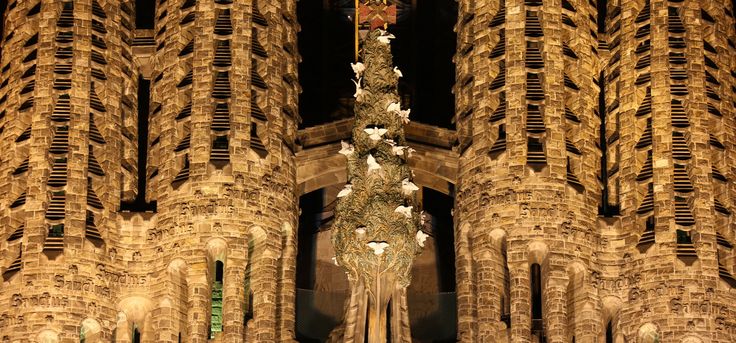
The Sagrada Família is the most famous work of the modernist architect Antoni Gaudí. Its unique shapes and structure make it completely different from other churches in the world.
It’s also a symbol of Barcelona and of Catalan Modernism. If there is one attraction you can’t miss durnig your visit, it’s the Sagrada Família!
Gaudí’s temple, with more than three million visitors every year, is the most visited monument in the whole of Spain.
For more background, history and architecture of the Sagrada Família, scroll further down.
The Sagrada Familia in Barcelona
Visit the Sagrada Família
To visit Barcelona and not see the Sagrada Família is like going to Paris for the first time and skipping the Eiffel Tower.
It will take roughly an hour and a half for a regular visit, and two hours if you climb one of the towers.
Our personal tips
- One of the most spectacular features of the Sagrada Família is the beautiful light from its enormous stained glass windows — which varies in color throughout the day.
Early in the morning the light is cooler with blue and green tones being more common, while later in the day you’ll see more oranges, yellows and reds.
- When you visit the towers of the Sagrada Família, you’ll have to leave your backpack in a special locker before entering the elevator. You’ll need coins (50 cents or 1 euro) for this, so make sure you have some on you.
- The area around the Sagrada Família features a lot of fast food chains and souvenir shops — not particularly interesting. After visiting the Basilica you can head north to Sant Pau Recinte Modernista, or to Passeig de Gràcia, where you’ll find the Casa Milà and Casa Batlló, also by Gaudí. La Casa de les Punxes is also nearby.
- For a wonderful view of La Sagrada Família, visit Hotel Majestic’s rooftop terrace, on Paseo de Gracia.
Dress code
As with many Catholic temples, there are several clothing restrictions. Make sure your clothing is suitable when you visit.
- Hats, caps and anything that covers the head is not permitted, with the exception of head covers that are related to one’s faith or due to health reasons.
- Shoulders must be covered. Tank-tops, short shorts, skirts above the knee, and garments that show the belly of have open backs aren’t allowed.
- Finally, clothes that draw special attention aren’t allowed either, such as for bachelor parties, regardless of religious purposes.
What is the best time to visit the Sagrada Família?
Generally speaking the temple is least crowded in the morning on weekdays.
If you book your tickets for 9 o’clock in the morning on a Tuesday there will still be people (the Sagrada Família receives over 3 million visitors a year so it’s always busy!), but less so than if you went on a weekend or later in the day.
A check-list for your visit
- Because the lines can be very long, we recommend you buy your tickets in advance.
- In case you don’t have tickets yet, try to plan your visit as early as possible. People can already be waiting in line before opening hours.
- Don’t forget to bring sunscreen, water and a hat for the sun, in case the temperatures are high.
- The ticket office where you can purchase entrance tickets is located at the Carrer de Sardenya, in front of the Passion Facade.
Practical information
Sagrada Família Tickets & Prices
If you book your tickets online in advance you can skip the long waiting lines.
There are 4 different types of tickets to choose from, with reduced rates for under-30’s, seniors and students. Children under age 11 enter for free.
You can print your tickets at home or download them on your smartphone and show them at the door.
-
- Basic ticket + audio guide app
The easiest and best way to buy your tickets in advance is via our partner Ticketbar. With the ticket you’ll get an audio guide app for your smartphone.
Cost is €15 for adults, €13 for students and under-30’s, and €11 for seniors.
- Basic ticket + audio guide app
-
- Basic ticket + audio guide + towers
Visit to one of the towers too.The view is really worth it. This option doesn’t include the audio-app but it does include the audio guide of the Sagrada Família.
Cost is €29 for adults, €27 for students and under-30’s, and €22 for seniors.
- Basic ticket + audio guide + towers
-
- Combination ticket: hop-on hop-off bus + Sagrada Família
Combination ticket for the Sagrada Família and the Hop On Hop Off-bus. If you planned to do both, this ticket will be the cheapest option.
Cost is €56 for adults, €40 for children between 10 and 17, and €15 for 4-9. Children under 4 enter for free.
- Combination ticket: hop-on hop-off bus + Sagrada Família
-
- Guided tour with a professional guide
You can go on a tour with a professional guide to learn even more about the history of the basilica and Gaudí’s life. The entrance fee is included in your tour, so no need to wait in the line.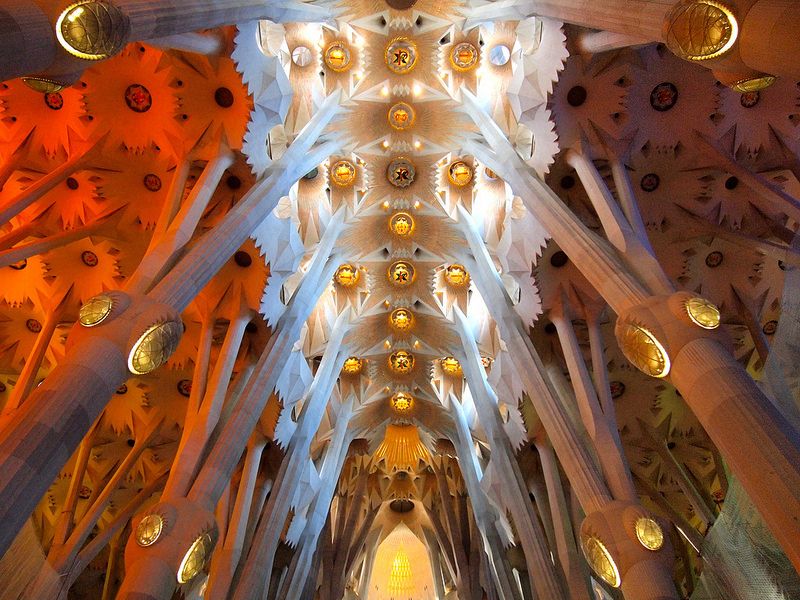
Cost is €29.50 for adults and €26 for children between 10 and 17. Children under 10 enter for free.
Unemployed people can visit the Sagrada Família for free on Wednesday evenings. But Note: only people that are unemployed in Spain upon presentation of their unemployment documents.
Disabled people and visitors with a handicap of over 65% can visit the Sagrada Família for free presenting their medical documentation.
Opening hours
- Nov to Feb: 9am – 6pm
- March: 9am – 7pm
- April to Sept: 9am- 8pm
- October: 9am – 7pm
Note: the Sagrada Família works with time slots. This means that you have to decide in advance what time you would like to visit the church.
Make sure you arrive at the entrance door on time. You can either print out your tickets or save them on your smartphone.
How to get to the Sagrada Família?
The Sagrada Família’s address is Carrer de Mallorca, 401, 08013 Barcelona, Spain.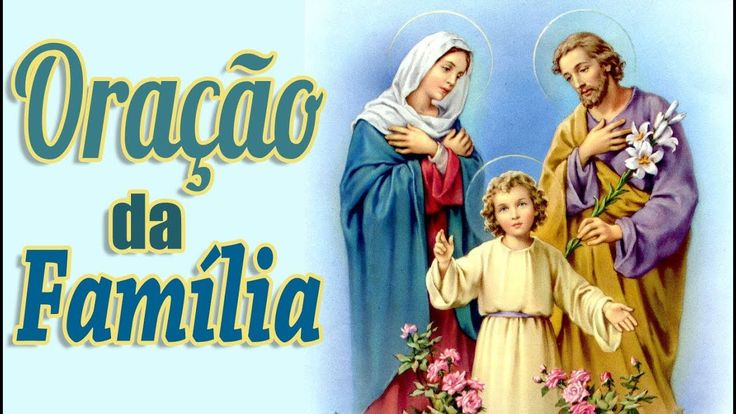
- Metro: The easiest way is to take the metro to stop Sagrada Família. Two lines stop here, the blue line L5 and purple line L2. Once you step out it’s impossible to miss Gaudí’s temple.
- Parking: the Sagrada Família doesn’t have its own parking, so if you come by car, you’ll need to find a parking place in the area. If you’re driving and using a GPS, just search for it by name, no need to input its location or coordinates.
- Hop-on hop-off bus: Both the Bus Turístic and the red buses stop at the Sagrada Família. There are tourist bus stops all over Barcelona, so check the routes and see which ones are most convenient.
- By bike: From the centre you can easily bike to the Sagrada Família. It will take you more or less 20 minutes, and you’ll find several places topark your bike nearby. There’s a bike path that runs along Carrer de Provença.
- On foot: It takes about half an hour to walk to Sagrada Família from Plaza Catalunya in the center.
Use Google Maps to find the best route from your location.
The entrance for ticket holders and people wanting to attend a mass is at the Nativity Facade, on Carrer de la Marina. Groups and visitors that have booked a tour use special entrances, also on the Nativity Facade near the main one.
Ticket booths are located on the other side of the building, in front of the Passion Facade on Carrer de Sardenya.
Sagrada Familia, Church in Barcelona
What to see and do during your visit to the Sagrada Família?
If you don’t have entrance tickets you can still admire the exterior of the basilica. In front of the Nativity and Passion Facade you will find parks where you can sit and enjoy an excellent view of the church.
The Sagrada Família has the shape of a Latin cross with five aisles. The three facades each symbolize a part of the life of Christ.
Map of La Sagrada Familia
Image belonging to the Sagrada Familia Foundation/Sagradafamilia.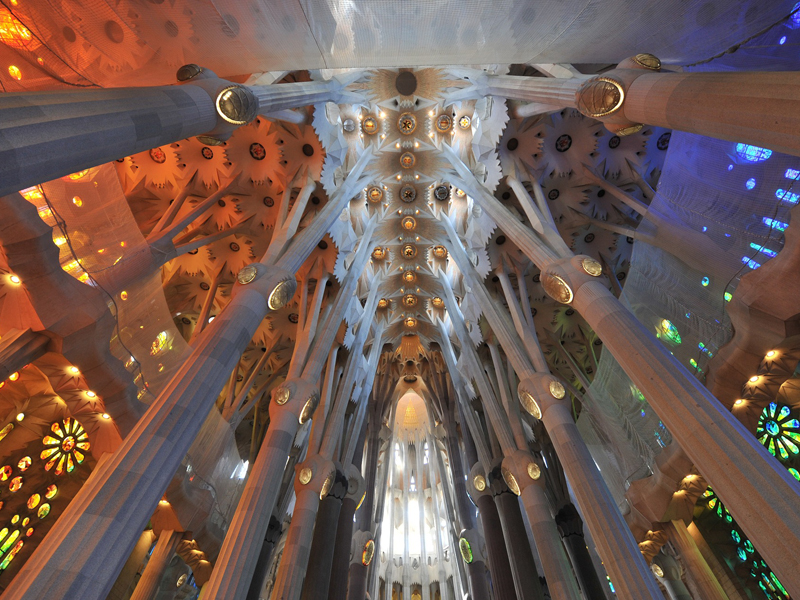
Nativity Facade
The Nativity Facade is a UNESCO World Heritage site. This part of the Sagrada Família is located on Carrer de la Marina, from where you enter if you have bought your ticket in advance.
The Nativity Facade is easily recognizable, it’s a lot darker and more ornamented than many of the more modern parts of the building.
As its name suggests, the Nativity Facade represents the birth of Christ. There are also many references to nature, a constant in all of Gaudí’s work.
This was the only part of the building that was finished by the time of Gaudí’s death, and thus it is the closest to his original vision for the temple.
While you’re there, make sure to pause for a moment to admire the magnificently detailed Door of the Charity, by Japanese sculptor Etsuro Sotoo.
Passion Facade
The Sagrada Familia as seen from the Passion facade
In the years after Gaudí’s death, nobody cared about the completion of the Sagrada Família. In 1936 almost all of Gaudí’s original designs were lost in a fire in the crypt.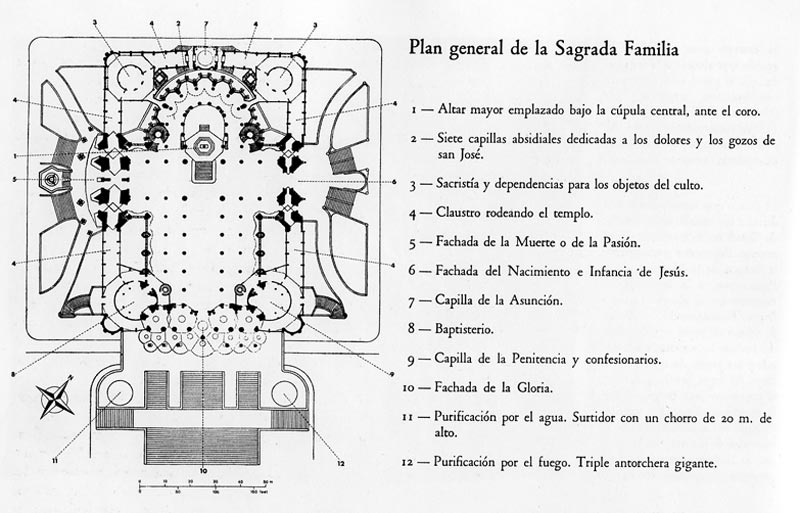
In the following years numerous architects took turns running the project, but lacking the original designs there was no clear consensus on what Gaudí’s vision for the building was.
In some instances, these departures from “Gaudí’s essence” angered people who wanted to stick to his roots as much as possible.
In 1978, the controversial Passion Facade was completed.
When visiting, you immediately see that the style of this side of the building is completely different from that of the Nativity Facade.
The Passion Facade is the work of architect Josep María Subirachs, who unlike Gaudí preferred simple, quasi-austere forms and little ornamentation.
The choice of this style was meant to evoke the suffering of Jesus Christ.
Facade of Glory
The Facade of Glory on Carrer de Mallorca is still incomplete.
For Gaudí this was the most important side of the building. The Facade of Glory refers to death, Heaven, and the glory of God.
Eventually this section should become the main entrance, but in order to complete it according to Gaudí’s design two blocks of houses would have to be demolished.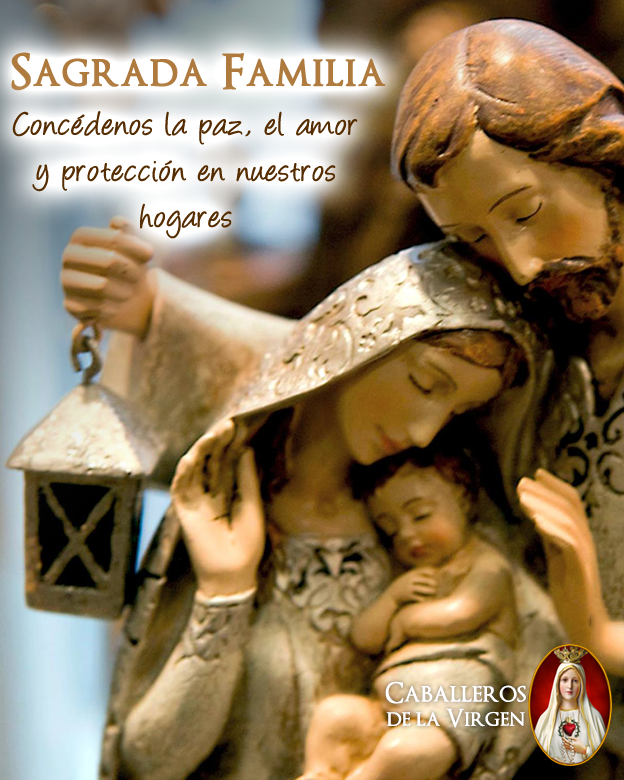
The project’s managers and the city council are still negotiating to decide how to proceed with construction of this section.
The interior of the Sagrada Família
The inside of the Sagrada Família is just as beautiful as the outside — perhaps even more so.
In 2010 the main nave was completed and this makes a visit to the church even more worthwhile.
Depending on the time of the day, the sunlight that filters through the stained glass windows is tinted blue, yellow, green, red, or orange.
The spectacular lighting isn’t the only thing that will grab your attention. The white stone columns that support the vaulted ceiling are also very beautiful.
Their shape, smooth and straight at the bottom and branching out at the top, mimics that of trees, giving the effect that you are in a forest.
You will find other references to nature everywhere you look, such as animals, flowers and plants. Also impressive is the temple’s organ, which holds 1492 pipes.
On the Facade of Glory side you can admire a five meter bronze door where the Holy Father is inscribed, followed by the sentence Give us our daily bread in many different languages.
Sagrada Família Museum
The Sagrada Família museum is located underneath the basilica, in the basement. Here you can see documents and old photos and learn more about Gaudí and the project.
There are also models that show what the basilica will look like upon completion.
You can also see the workshop where sculptors and stone-cutters are creating many of the decorative elements that cover the temple.
A visit to the museum is included in your entrance ticket.
Crypt
Also in the basement you’ll find the crypt. This is where Gaudí spent the last years of his life, and it is the place where he is buried.
He regularly slept in his workshop, together with his notes, plans, and a model of the temple. It’s not possible to visit the crypt, but it can be viewed from outside.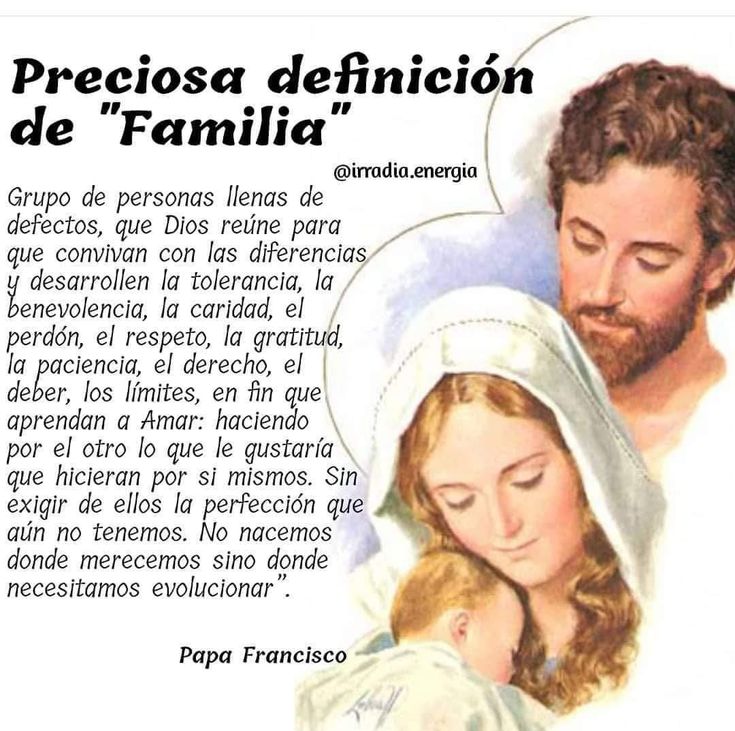
You can come closer if you attend a Mass. The crypt, like the Nativity Facade, is placed on the Unesco list of Cultural World Heritage sites.
The central altar has an altar piece from sculptor Josep Llimona.
There are also four chapels dedicated to the Virgin of El Carmen (which holds Gaudí’s grave), Christ, the Virgin of Montserrat, and Christ at the Cross.
The latter is the resting place of Josep María Bocabella, who came up with the idea to build the Sagrada Família at the end of the 19th century.
The floor of the crypt is decorated with a roman mosaic with images of wheat and vines.
Towers
When completed, The Sagrada Família will have a total of 18 towers.
In order of ascending height and importance these symbolize the twelve Apostles, the Virgin Mary, the four Evangelists, and Jesus Christ.
Still to be constructed is the central tower representing Christ between the evangelists.
The shortest tower is 90 meters high. The tallest, when finished, will measure 172.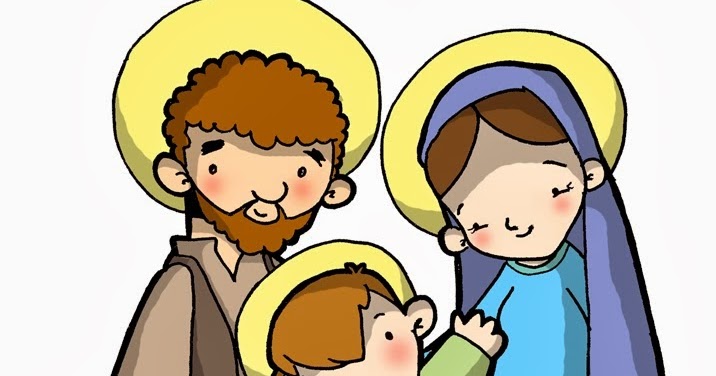
An interesting fact: The reason Gaudí chose 172.5 meters as the height of the central tower is because of nearby Montjuic Hill.
In his view, the creations of men should never surpass the creations of God, so his Basilica couldn’t be taller than Montjuic, which at the time was believed to be 173 meters tall
It is now known that its actual height is slightly over 180 meters.
Which towers at the Sagrada Família should you visit?
You can choose between the Nativity Facade and the towers of the Passion Facade.
In the first case you look over the east of the city and in the second case the city center. We think that both towers are worth the view.
If you go up the Passion Facade you get slightly higher and the Nativity Facade has a longer bridge.
Unfortunately it’s not possible to visit both towers with one entrance ticket.
Because of security regulations, children under age 6 are not allowed up, and children up to age 16 should always be accompanied by an adult.
People with impaired mobility or vision are not allowed in the towers due to safety reasons.
In case of stormy weather or heavy rain, the elevators to the towers may be closed for security reasons. If this happens, you will get a refund.
The school of the Sagrada Família
Between 1908 and 1909 a school was built on the premises (Escoles de la Sagrada Família) for the children of the workers.
Gaudí wanted to demolish it to increase space for the Basilica, but it ended up being left up after his death.
In 2002 it was moved to the southern corner of the site, and today the old building can be visited.
Famous architects such as Le Corbusier and Santiago Calatrava were inspired by the Sagrada Família School’s iconic design.
The gift shop
Are you looking for a souvenir or a gift? The Sagrada Família has two gift shops.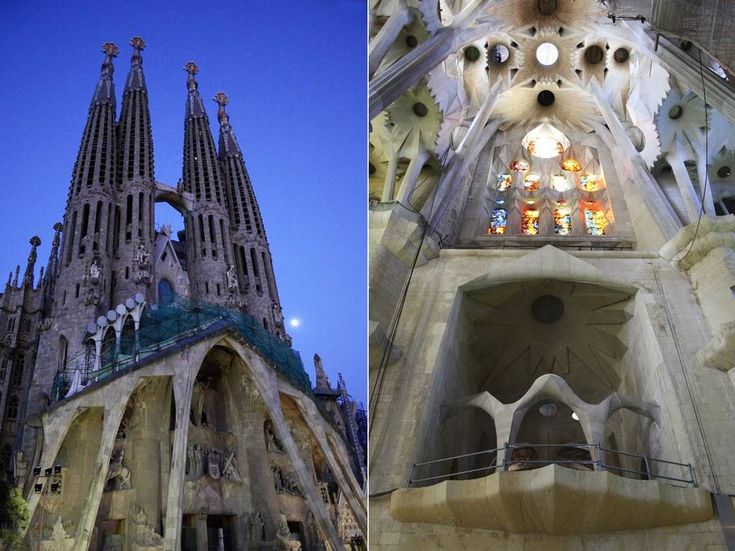
The first store is behind the elevator of the Passion Facade while the second one is at street level at the Carrer de la Marina, on the side of the Nativity Facade.
The latter one is accessible without an entrance ticket.
the inside of the Sagrada Familia
Photography
There are no restrictions on photography inside the temple, you can take pictures of whatever you want. The only time it is not allowed is during religious services.
Attend a mass at the Sagrada Família
It is possible to attend a mass at the Sagrada Família, there are several possibilities. Currently, ceremonies are held in the crypt underneath the church and at the main altar.
Crypt
- Mon-Fri: 9 am (Spanish) and 8.15 pm
- Every day prior to a holiday: 7.30 pm
- Sunday and holidays: 9 am (Spanish), 10.30 am, 11.45 am (Spanish), 1 pm, 6.30 pm (only in the winter) and 8.15 pm (Spanish).
Unless otherwise specified, services are in Catalan.
Main Altar
On Sunday at 9am there is a special international mass at the great altar in the Sagrada Família.
The service is held in English, French and Italian and you can attend for free. If you attend the service you can visit the temple for free afterwards.
For the international mass there are 700 seats available and 2000 standing places. The earlier you arrive, the higher the chance for a good seat.
The service lasts about one hour and a half and guests must behave respectfully throughout. Be especially mindful of the dress code and limit picture-taking to the minimum.
Visit the Sagrada Família for free
Admiring Gaudí’s work from the outside doesn’t cost anything, you only pay to visit the interior. However it is possible to visit the Sagrada Família for free:
- During and after the international mass on Sunday morning
- During the city feasts of La Mercè on the 24th of September there are usually free tickets available for several days
- Free admission to the Sagrada Família is also included in the Barcelona City Pass
History and architecture of the Sagrada Família
After 135 years, the Sagrada Família, considered the masterpiece of modernist architect Antoni Gaudí, is still unfinished. The aim is to complete it in 2026.
Timeline
1882 – Francisco de Paula del Villar, an old acquaintance of Gaudí (they studied together), put the design on paper and the first stone was laid in 1882.
1886 – Antoni Gaudí was hired as the architect. He thought he’d need about ten years to finish the project. He estimates the project will take 10 years.
1910 – Gaudí is working exclusively on the Sagrada Família. He becomes so absorbed in the project that he moves into his workshop on site.
1926 – Gaudí is hit by a tram. He dies three days later in the hospital. The construction of the church slows down with his death.
1936 – A fire breaks out in the crypt, destroying most of Gaudí’s plans and sketches for the building.
1952 – The decision is made to bring the project to life again. New architects begin working on it and many leave their personal mark on the building.
1978 – The Passion Facade (the ‘modern’ side) is finished.
2010 – The interior of the Sagrada Família is finished. Pope Benedictus XVI consecras the temple and grants it the status of Basilica. Tens of thousands of people attend the event.
2026 – The building will (hopefully) be completed on the 100th anniversary of Gaudí’s death. The following video shows what it will look like once it’s done.
Why is it taking so long to build?
The fact that the church still isn’t finished is partly because of the enormous size of the project. When it is completed, the Sagrada Família will be the largest church in the world.
Ornamentation is rich and abundant all over the temple
Gaudí’s elaborate style has also caused many complications.
The level of craftsmanship required to build the temple to his high standards has made work progress very slowly.
But beyond the technical difficulty of the build, finance was always the biggest problem.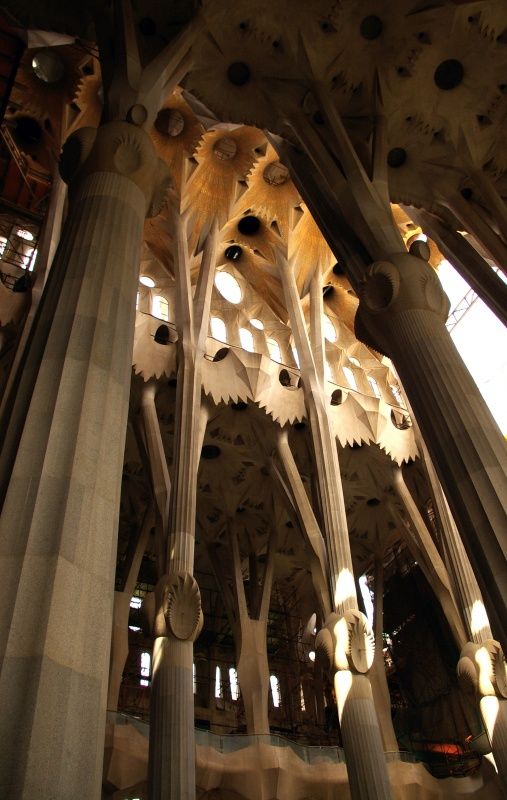
According to the founder Josep Maria Bocabella, the Sagrada Familia should become a church of penance and therefore should be funded only with charitable donations.
This turned out to be quite a tall order, and for many years Gaudí dedicated much of his time to fundraising for the temple.
When asked about the project’s slow progress, Gaudí would respond by saying “My client, God, is in no hurry”.
Sagrada Familia becomes a tourist attraction
Every year, more and more tourists came to take a look at what nowadays is considered one of the most controversial masterpieces of modern architecture.
In the eighties, the building commission wised up on this and realized that there was an economic opportunity.
It was decided to charge an entrance fee, and with the new influx of funds the building process began to speed up.
In 2010 the interior of the church was finished but the exterior parts and towers are still under construction.
Currently, the project employs around 100 sculptors and builders on a permanent basis.
Who was Antoni Gaudí?
For the last sixteen years of his life, after completing the Casa Milà (La Pedrera), Gaudí dedicated himself exclusively to the Sagrada Família.
Gaudí had changed by then from a flamboyant young man to a shabbily dressed hermit and fervent catholic.
Gaudí was inspired by old gothic and Byzantine cathedrals for the Sagrada Família but he decided not to follow the initial neo-gothic design of his predecessor.
He wanted the Sagrada Família to embody the message of the four evangelists. He kept a maquette of the temple on his bed side table so it would always be in his thoughts.
In 1926, while out on a morning walk, Gaudí was hit by a tram.
At the time he was carrying no identity documents and because of his shabby clothing and unkempt appearance passersby mistook him for a beggar.
It is likely that he received substandard medical treatment because of this, and by the time he was identified his health had deteriorated significantly.
He died three days later in the hospital, and was buried in the Sagrada Família.
With his death, work on the project slowed down considerably and it would take many years for it to pick up again.
Interesting Fact: Gaudí’s face is depicted in two places in the Sagrada Família. On the Nativity Facade, as the figure that represents Joseph, and on the Passion Facade, where Veronica holds the face of Jesus with a cloth.
Magical square
On the Passion Facade you’ll find the magic square, created by Josep María Subirachs, who created the sculptures that decorate that portion of the building.
It is one of the many riddles and enigmas that you can find throughout the Sagrada Família. In a row, the numbers of the square all add up to 33, the age of Jesus Christ when he died, but also the number of grades in the order of Freemasons.
Food and drinks tips around La Sagrada Família
- Buenas Migas: italian sandwiches, salads, smoothies and homemade ice tea, cakes and cookies, good coffee with fresh milk, teas and organic yoghurt.
- La Paradeta: Fish, fish and more fish. Budget €25 per person for a very satisfying meal of fish and shellfish. Closed on Mondays and between 4pm-8pm.
- Xurrería Sagrada Família: old fashioned churros with chocolate sauce (their terrace is tiny, so you need a little bit of luck!)
Attractions near Sagrada Familia
There are two important attractions near La Sagrada Familia:
- Park Güell
- Sant Pau Modernist Complex
Visit La Sagrada Família and Park Güell in one day
Both la Sagrada Família and Park Güell are must sees, especially if it’s your first time in Barcelona. If you want to visit these two can’t-miss monuments on a single day read our tips below.
How do you get from the Sagrada Família to Park Güell?
There are several ways to get from one attraction to the other. Walking, by bike, taxi, bus and metro. Good to know: the difference in elevation is significant. Keep this in mind if you plan to walk or bike.
Tip: Make sure to budget enough time for your visits. The Sagrada Família usually takes between one and two hours (more if you’re visiting the towers), and Park Guell is more or less the same.
Travel time between the two varies depending on your mode of transport. On foot it’s roughly ~35 minutes.
- Walking
If you have enough time, walk up to Park Güell and stop for lunch in the district of Gràcia. We love Sol Soler for tapas on Plaça del Sol. If you want something sweet instead, head to La Nena on Carrer Ramon i Cajal for churros and chocolate and lemon pie. - By bus
Take local bus line 92 at Sant Antoni Maria Claret-Lepant, a 10 minute walk from Sagrada Família. Get off at Ctr del Carmel-Parc Güell. - Metro
Get the Blue Line at Sagrada Família towards Vall D’Hebron and get off at El Coll-La Teixonera. From there it’s a 15 minute walk and the good news is that it’s downhill.You’ll also get to to enjoy a nice view of Barcelona.
- With the hop-on hop-off bus
You can easily travel between Sagrada Família and the Park Güell on the Hop On Hop Off Bus. The Blue Line runs by both attractions and the distance is about 20 to 30 minutes. - Taxi
There are always enough taxis at both sides of the Sagrada that take you in about 10-20 minutes (depending on traffic) to the main entrance of Park Güell (Carrer d’Olot).
Frequently Asked Questions
Does the Sagrada Familia offer discounts on tickets
Unfortunately, the answer is no. Certain groups can purchase tickets at a lower rate (children, students, seniors), but there are no special discounted tickets to visit the Sagrada Familia.
Is it worth it to reserve tickets in advance?
Yes. The Sagrada Familia is the most visited tourist attraction in the entire country. If you show up without a ticket you may have to wait in line for a long time, and on certain particularly busy days you may not be able to get in.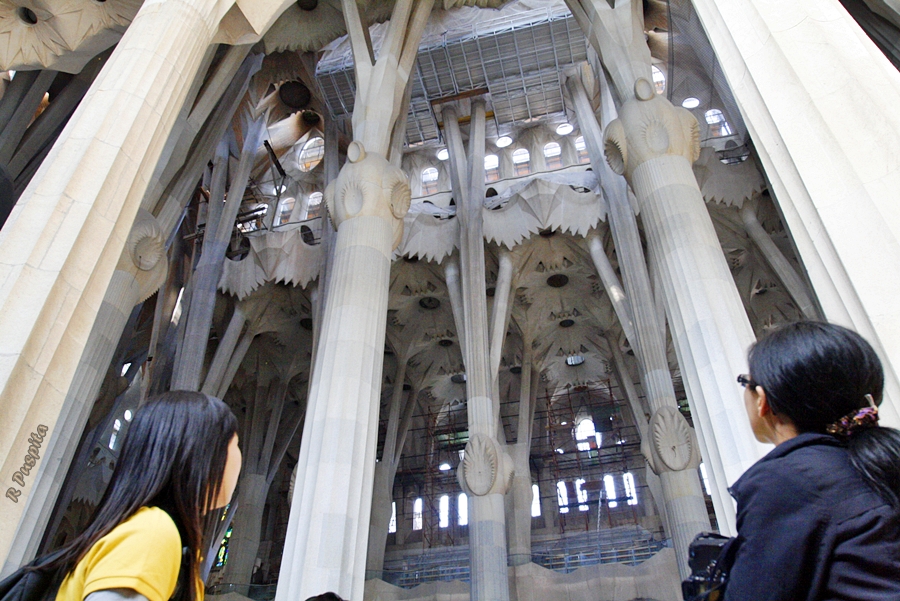
Is is possible to visit the Sagrada Família at night?
Not specifically. There are no night tickets or tours to visit the temple, the closest you can come is choosing the last time slots of the day in winter (the Sagrada Família closes at 6 pm between November and February). That said, if you visit very late in the day you won’t get to enjoy the illuminated stained glass windows that light up the central nave.
Who designed the Sagrada Família?
Catalan architect Antoni Gaudí. Gaudí was a modernist architect that lived from 1852 to 1926. He designed many iconic buildings, such as the Casa Milà, the Casa Batlló, and the famous Park Güell.
How long has the Sagrada Família been under construction?
A very long time! Construction began in 1882, meaning that the building has been under construction for 136 years!
When will the Sagrada Familia be finished?
The current goal is 2026, the one-hundredth anniversary of Gaudí’s death.
What does ‘Sagrada Família’ mean?
Sagrada Família translates to “Holy Family”, and it refers to the family of Jesus Christ, and to his early followers that founded the Christian religion.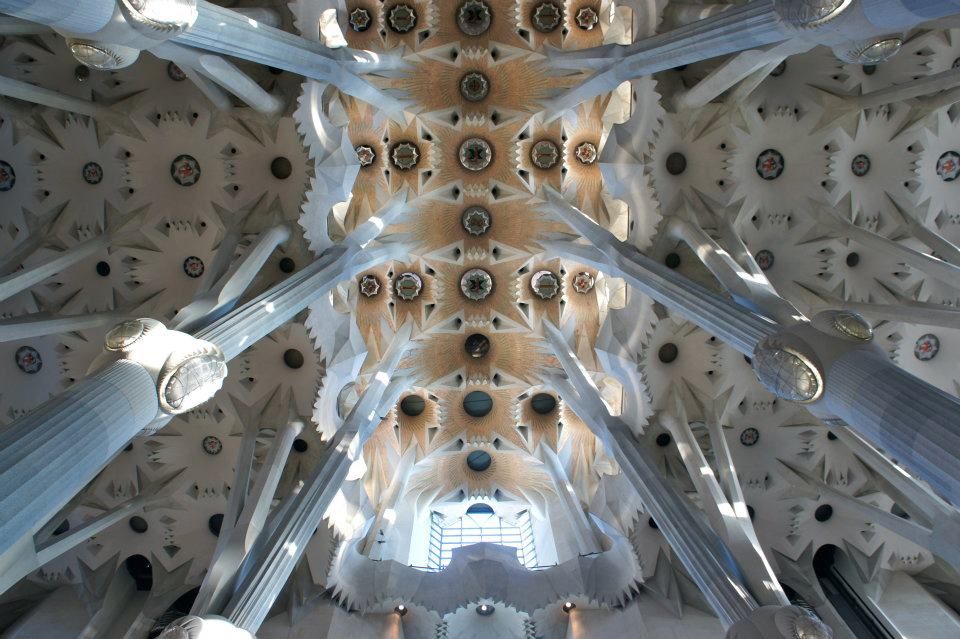
Sagrada Familia: 10 Interesting Facts
Sagrada Familia is the undoubted decoration of Barcelona. Why is the Sagrada Familia so attractive to travelers from all over the world? 10 interesting facts about the Sagrada Familia (Sagrada Familia) that you are unlikely to read in standard travel guides.
1 Sagrada Familia as a symbol of the unity of nature and man
The genius Antonio Gaudi conceived the Sagrada Familia as a symbol of the unity of nature and man, which is why the appearance of the architectural structure is so original.
In 2015, the Sagrada Familia was visited by 8.5 million people, a figure comparable to a visit to the Prado Museum, for example.

A must see attraction.
Would you like to buy tickets in advance? You can do this online at the link on the official ticket platform.
2A started something without Gaudi
At first the idea of building was not associated with the name of Antonio Gaudí, but later he joined the construction of the Sagrada Familia. Gaudi built the Sagrada Familia for 30 years, until his death, but since the construction is carried out only on donations, it continues to this day.
OUR ADVICE. If you are planning to visit the Sagrada Familia and other places of interest in Barcelona, check out the Barcelona City Pass to save time and money. The price of the card includes skip-the-line tickets to the main attractions of Barcelona, transfers from the airport and back, a trip on the tourist bus and discounts on many museums and other places of interest in Barcelona. Detailed information for is here .

3We will build on the outskirts
The temple was conceived by the Catholic community as a place designed to beg for the sins of people mired in vice. A new place of repentance had to be created. The most deserted and unprestigious plot of land on the outskirts was chosen. It was on this piece of land where goats grazed that Antonio Gaudi began to build a masterpiece.
4Sagrada Familia is not a Cathedral
The site does not belong to the Church and the construction is carried out on donations from parishioners. Therefore, the Church does not oversee the project. It is a mistake to call the Sagrada Familia a cathedral. Barcelona has another important and venerated church, the Cathedral of Saint Eulalia in the Old City.
5To build or not to build? That is the question
In 2008, the question of stopping construction was raised.
6Why does it take so long to build
Completion of construction is hampered by the difficulty of making stone blocks that form the eccentric forms of the structure. There is a computer model that fits each block individually.
7And when the Sagrada Familia will finally be completed
The Spanish government announces the year 2026, in which, perhaps, the construction will be completed. Previously, apparently, this will not happen.
8Visit of Pope Benedict XVI to the Sagrada Familia
On November 7, 2010, Pope Benedict XVI consecrated an amazingly beautiful church. Now the Sagrada Familia may well become the venue for the service.
9 Beauty is in the details
The Art Nouveau style in the architecture of the Sagrada Familia can be seen in everything.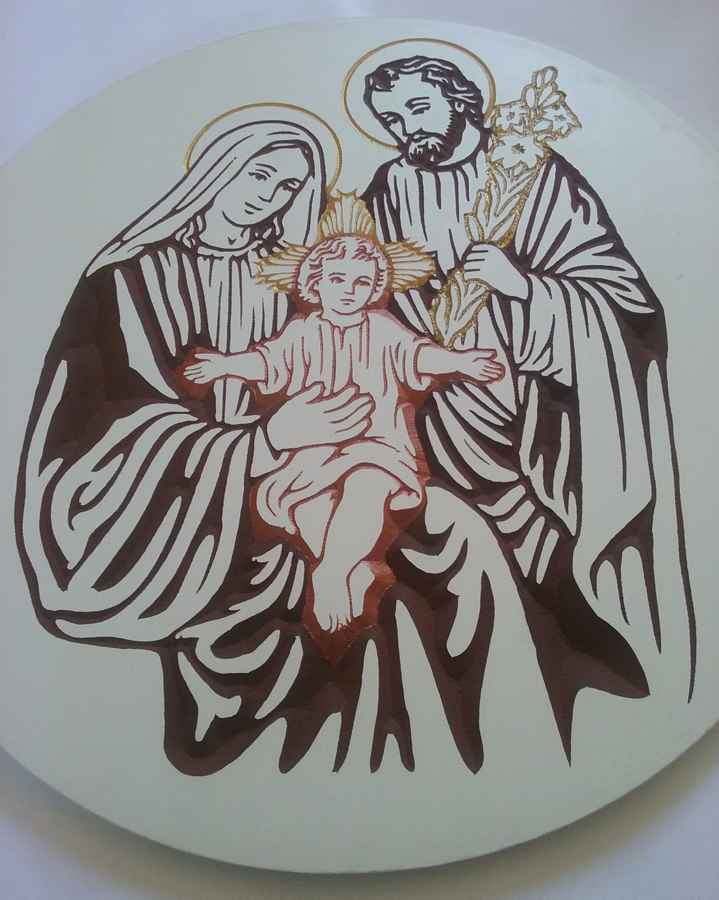
10Inspired by the masterpieces of Gaudí
Church of the 26 Martyrs in Nagasaki
There are always many representatives from the Land of the Rising Sun in the Sagrada Familia. Being fans of the work of Antonio Gaudi, they attack all the creations of the great architect. And all because 50 years ago, Japanese architect Kenji Imai visited Barcelona. Inspired by what he saw, he creates something similar in Nagasaki – the Church of the 26 Martyrs. The Japanese were impressed, and since then Barcelona has been their place of pilgrimage.
Seeing this amazing temple with your own eyes, you will be able to personally touch the incredibly interesting and delightfully beautiful monument of Catalan culture.
Would you like to see Sagrada Familia and other works of Gaudí? Embark on a full day tour of Barcelona. You can buy a ticket at the link on the official ticket platform.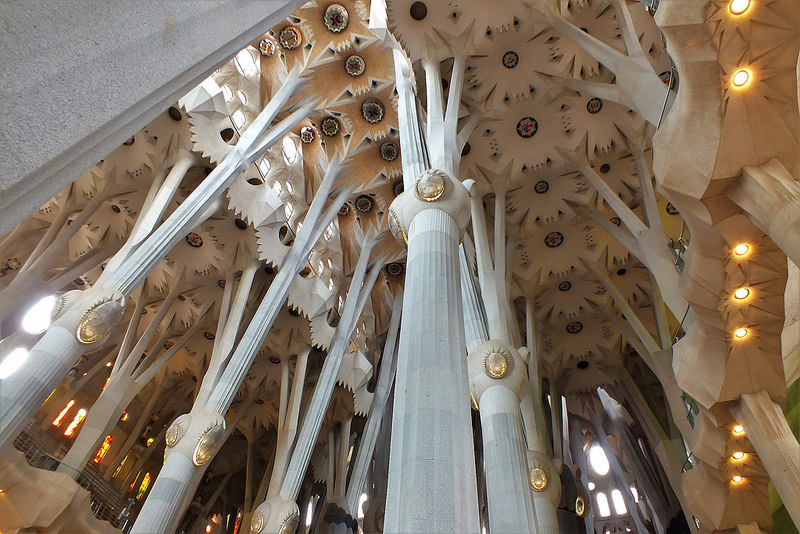
- How to avoid queues at Barcelona attractions. Tickets for Sagrada Familia and Park Güell skip the line.
- How not to be deceived by local taxi drivers. Order a taxi in advance with fixed rates online. The most reliable service for ordering a taxi is KiwiTaxi .
- Excursions in Barcelona with locals will help you get to know this city for real. The best way to get comfortable in an unfamiliar city is to walk around it with a person who has lived here for many years.
- We advise you to take out travel insurance so that there are no unpleasant surprises while traveling to Barcelona.
- Barcelona City Pass is a one-stop card that makes organizing your holiday in Barcelona easier and saves a lot of time and money.
- Barcelona hotels: are our selections and recommendations.
-
Bus Turistic is a tourist bus and a great way to get to all the necessary monuments of Barcelona quickly, with a breeze and comfort.
- Drimsim is a universal international SIM card and a free travel application. Best prices, fast internet and worldwide calls.
- TAGS
- Sagrada Familia
- Antoni Gaudí Works
Previous articlePopulation of Barcelona: in figures, facts and photos
Next articleHow to avoid the queue in Barcelona when buying tickets
WE ARE IN SOC. NETWORKS
NEW
Load more
TICKET REVIEWS
4.8
4.8 rating
4.8 out of 5 (based on 16 traveler reviews)
2 VIEW 000 the most remarkable place in the world
Sagrada Familia is one of the most iconic buildings in the world. Considered the greatest work of renowned Catalan architect Antonio Gaudí, this UNESCO World Heritage-listed basilica was recently selected as the World’s Remarkable Venue Awards winner of “Most Remarkable Site” by over 6,000 culture lovers.
To find out more about this amazing piece of architecture and give you an exclusive view of Sagrada Familia, we spoke to Javier Martinez, Managing Director of Sagrada Familia.
Thank you for contacting us! Tell us a little more about your role in the Sagrada Familia – what do you like most about your job?
It’s hard to choose. The Sagrada Família is a vibrant, dynamic and ever-changing organization. In my job, no two days are the same, and this is what I like most about my position. Of course, when I wake up, I have an agenda ahead of me, but there are no two days in a row.
This makes the work very interesting and allows me to deal with many different topics. I wouldn’t be able to single out one particular aspect as my favourite, but I will stick to this dynamic reality as what I enjoy most about my work.
Why the Sagrada Familia is so special
Congratulations on winning the RVA international competition in the Most Remarkable Place category! What do you think makes Sagrada Familia such a wonderful place?
Sagrada Familia is the essence of Antoni Gaudí.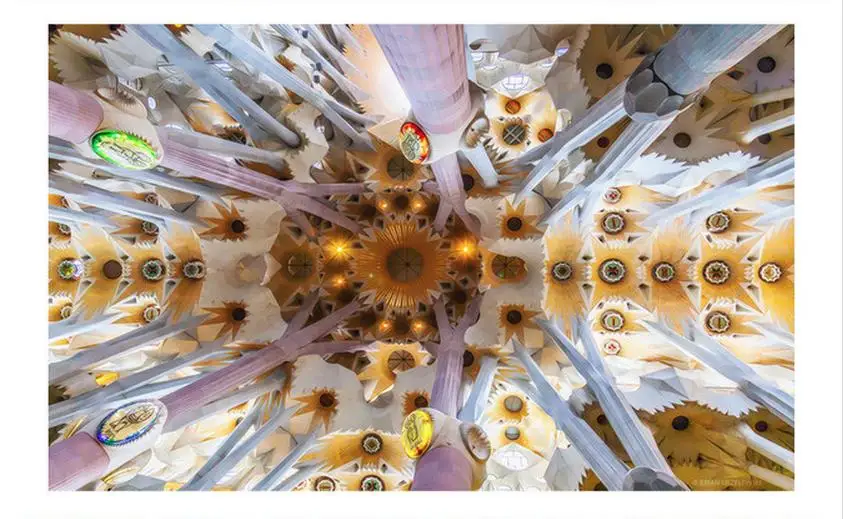
Everyone has a place in the Sagrada Familia. Every person finds in the Sagrada Familia what he is looking for, both from a spiritual point of view and from the point of view of aesthetic beauty, art, architecture … That is why we are regarded as a world monument and we can communicate with people from all over the world.
Antoni Gaudí once said that people from all over the world would come to visit the Sagrada Familia, and he was right: more than 4.5 million people from 120 different countries visit us every year.
We are very happy and proud to receive this worldwide recognition from Tiqets users.
“Gaudi did something very destructive: he brought out what churches usually have inside. All altarpieces, images and other things that are usually found inside the basilica; Gaudí transferred them to the facades and created the Bible carved in stone.
”
The exterior of the Sagrada Familia is for many the most symbolic image of Barcelona. Can you tell us about the unique features of the building’s exterior, such as the different facades, or why it looks the way it does?
Once again, what makes the exterior special is Antoni Gaudí’s pioneering spirit. Gaudí did something very destructive: he brought out what is usually inside churches. All altarpieces, images and other things that are usually found inside the basilica; Gaudi transferred them to the facades and created the Bible carved in stone.
The three main façades symbolize the three main aspects of the life of Jesus Christ: His coming into the world on the Nativity façade, his death and resurrection on the Passion façade, and his journey to eternal life on the Glory façade, which has yet to be built. . So anyone who passes outside the Sagrada Família can visualize these aspects of the life of Jesus Christ without entering it, and it was something truly devastating.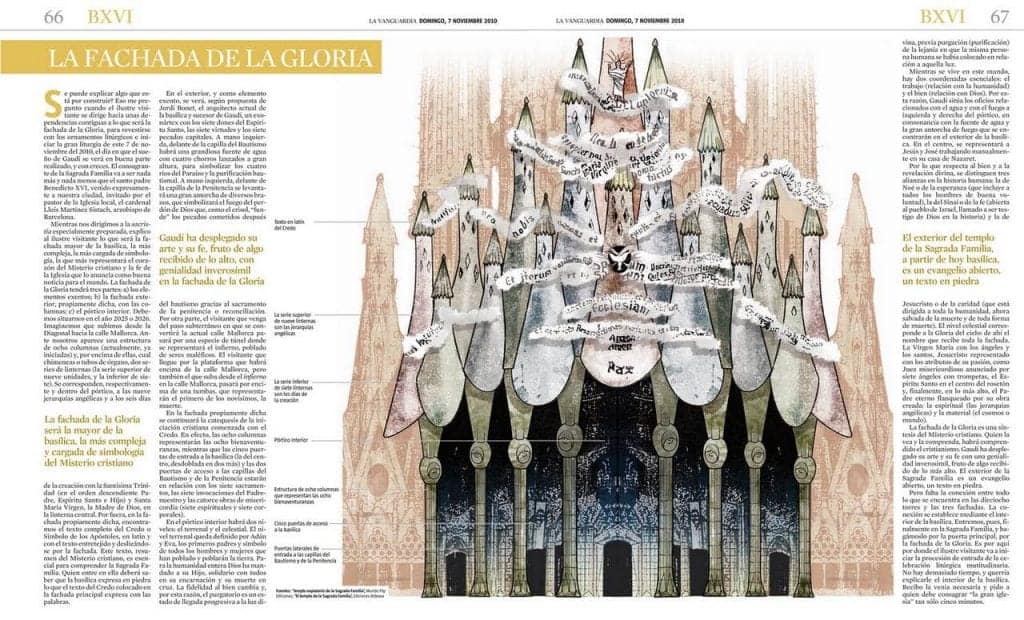
Gaudí also conceived a temple for unbelievers so that everyone could learn about the life of Jesus Christ. And this is a very innovative way of conveying the life of Jesus Christ at different stages of his life, up to his death. This innovation is one of the keys to Sagrada Familia’s success.
Take a look inside the Sagrada Familia
Many Tiqeteers employees in our Amsterdam office have been to the Basilica and said visiting the Sagrada Familia is an incredible experience. What is so special about the interior of the building that makes this experience so meaningful to people?
The first entrance to Sagrada Familia is something special. Sagrada Familia is like nothing you’ve ever seen. No matter how many people explain and tell this, until you come, see and feel for yourself, you will not be able to understand what it means. We saw many visitors who, having entered inside, are touched and even cry.
As I said, the Sagrada Familia is so special that everyone finds what they want in it. Obviously, there are many people with spiritual motives, and in this case they find the ideal conditions for living this spiritual relationship. But many people come with other motives, which can be cultural, artistic, architectural, related to beauty, light … and they all find what they are looking for.
Upon entering the Sagrada Familia one finds an interesting and revealing aspect. And, of course, grandeur: the height of the naves, the light… everything that makes the moment you enter the Sagrada Familia something special and unforgettable. And this is what makes the interior of the temple so unique.
There is a lot of symbolism in the interior. Could you share some of the symbolic features that people can find in the Sagrada Familia?
As I mentioned earlier, there is a lot of religious symbolism on the facades. However, there are some very interesting moments in the interior.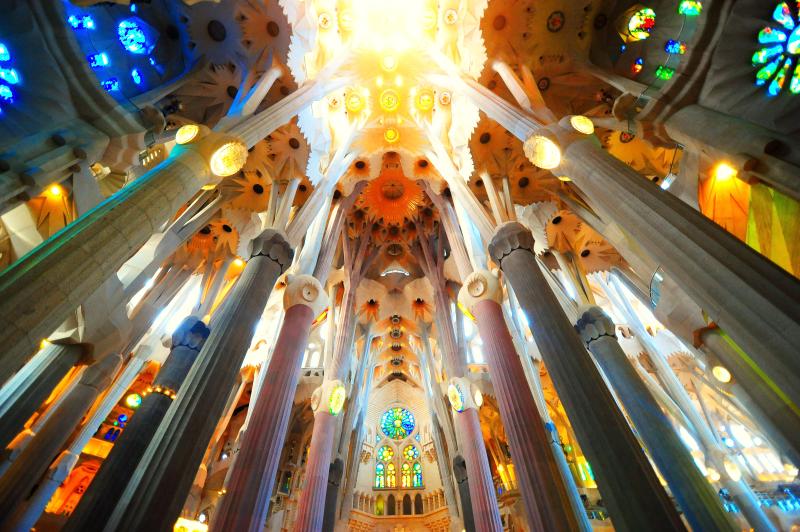
I would like to highlight three in particular:
Eternal Father
This triangular symbol can be found on the large hyperboloid above the presbytery. This can be seen from the entrance to Gloria. It was designed by architectural director Jordi Bonet and has been a great success. This is a golden triangle, which looks very beautiful framed by this huge hyperboloid, symbolizing the Eternal Father.
Stained glass
The light that comes in from outside has a very clear symbolism. Sunrise-oriented windows are painted in cold colors, blue and green, coinciding with the first hours of the day, which are also colder. Then, as the sun approaches, the windows through which the light enters are colored red and orange, and become warmer as the day progresses. This gives a very symbolic span of time that changes throughout the day and is a very beautiful experience indeed.
Door of Glory
It was designed by the sculptor Josep María Subirax and the door is inscribed with the Lord’s Prayer in more than 50 languages.
These are the three aspects that I would like to highlight when it comes to the symbolism inside the Sagrada Familia.
“It is impossible to choose a favorite element in the Sagrada Familia, it is really very unfair! It’s like being asked which of your children you love the most.”
We apologize for this very unfair question: if you had to choose your favorite part of the Sagrada Familia, which would you choose? Is there any particular window, façade, tower, view, or feature that comes to mind?
It is impossible to choose a favorite element in the Sagrada Familia, this is really very unfair! It’s like being asked which of your children you love the most.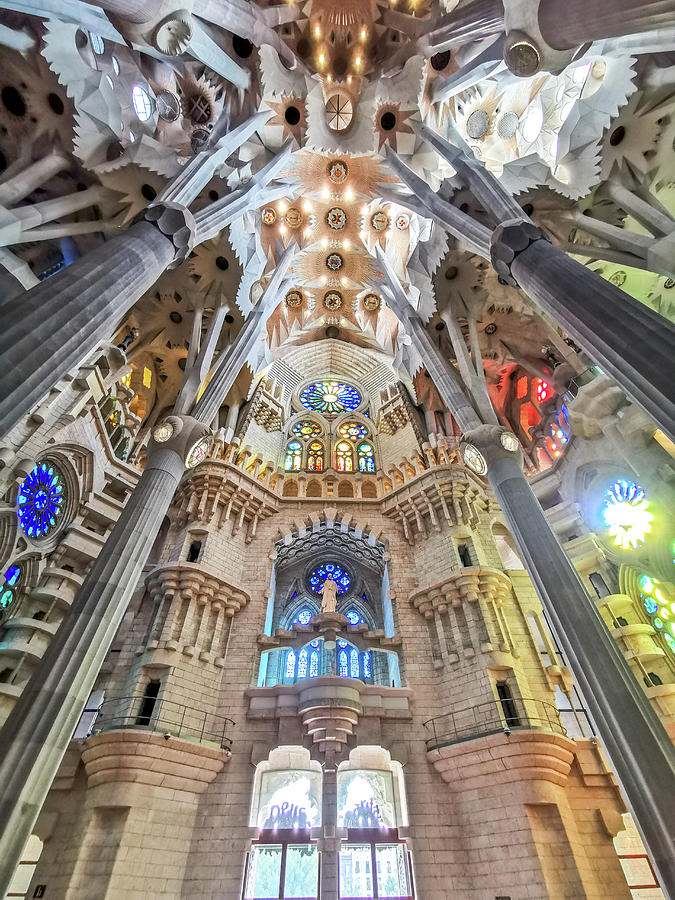
More than a physical or material aspect, I am left with emotions, what I felt and what the Sagrada Familia has given me in the 19 years that I have been part of this project. Perhaps the most memorable for me was November 2010, when Pope Benedict XVI came to consecrate the Sagrada Familia.
This religious ceremony opened the Sagrada Familia to the world. Over 4,000 people could be seen in the naves in a very beautiful ceremony. I think I’m more interested in this moment than the choice of the material aspect. It is a beautiful memory, and even today I close my eyes and see it in my mind’s eye. Not only because of what the ceremony involved in the transformation of a civil building into a church meant, but also because it was something much more. The fact that the Pope himself wanted to come to Barcelona at the invitation of Cardinal Martínez Sistach gave this event much more significance. It was a ceremony that was broadcast live and attended by over 300,000,000 people around the world.
It was a unique day that opened the basilica to the world and a wonderful moment that has stayed with me ever since.
What advice would you give to those visiting Sagrada Familia for the first time? Is there anything they should pay attention to or focus on? Is there anything they might accidentally miss if they didn’t know about it?
There are two important points of the first visit. There are many people who don’t really know what they want to see. They may have seen some pictures, but they don’t have a complete idea of what they are going to find in the Sagrada Familia.
The first moment is when they get off the subway, look up, see it rise in the center of the city, and say: “Oh my God, what is this… I have not seen this.” It looks huge in the middle of the city.
And then the second moment comes when you think that nothing else will impress you, because you have already experienced the first emotion. This moment happens when you enter the building.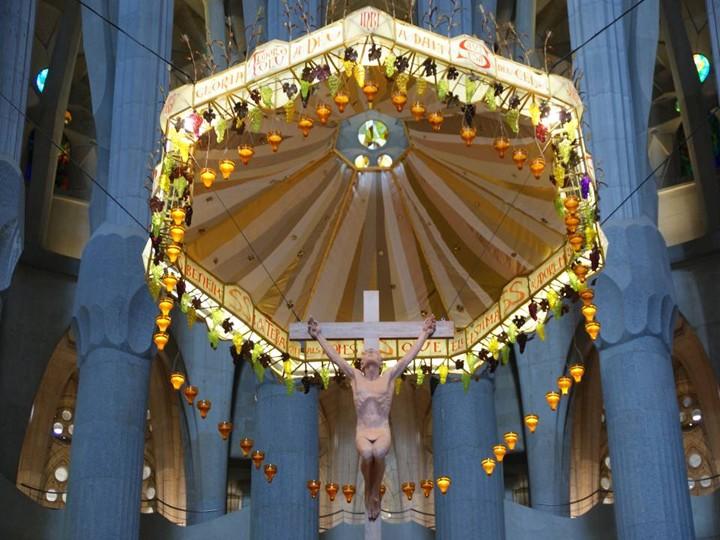
These are two great moments that I would recommend for people to remember and enjoy.
Sagrada Familia construction process
Do you have any interesting stories related to the construction of Sagrada Familia? Is there anything you particularly enjoyed about the process?
There are many anecdotes to choose from, but I will focus on the one related to the above story about the 2010 dedication of the basilica. Imagine how we workers felt at that moment. We have reached our great goal: to cover the naves so that the Pope will come to consecrate the basilica. It was a moment of great excitement and strong emotions. It was then that we put the famous question on the table: “When will the construction of the Sagrada Familia be completed?”
Before that, since 1882, we lived with the urban legend that the Sagrada Familia would never be completed.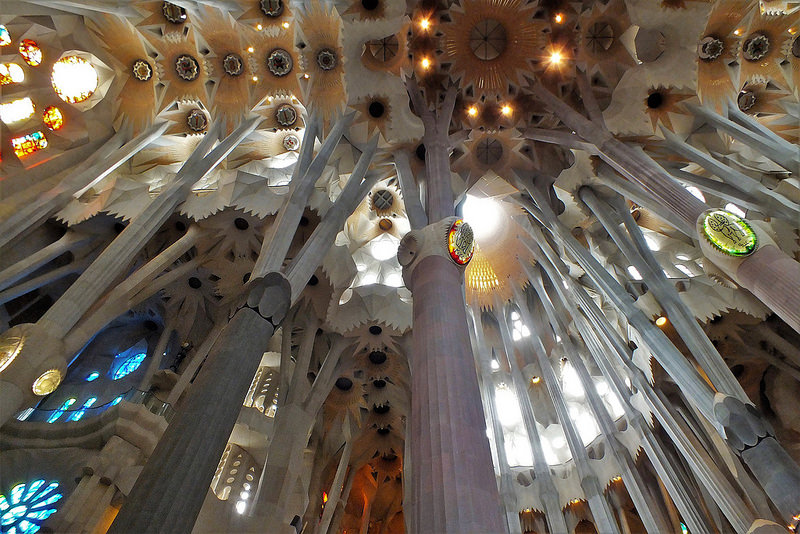
The task was huge in two senses. On the one hand, the practicality of construction. We had to guarantee safety. 16,000 people can enter the Sagrada Familia per day. This is something very peculiar, unique in the world, because the building can be visited by thousands of people while it is still under construction.
On the other hand, financing: how could we take over the financing of the construction in such a short period of time. To give you an idea, as we mark 2026 as the date of completion (2019), we have completed two thirds of the basilica. It took 139 years, and we had 7 years to build the last third. Imagine the constructive and financial effort that meant!
Faced with this problem, we had to act differently. If we continue like this, we will end not in 2026, but in 2067.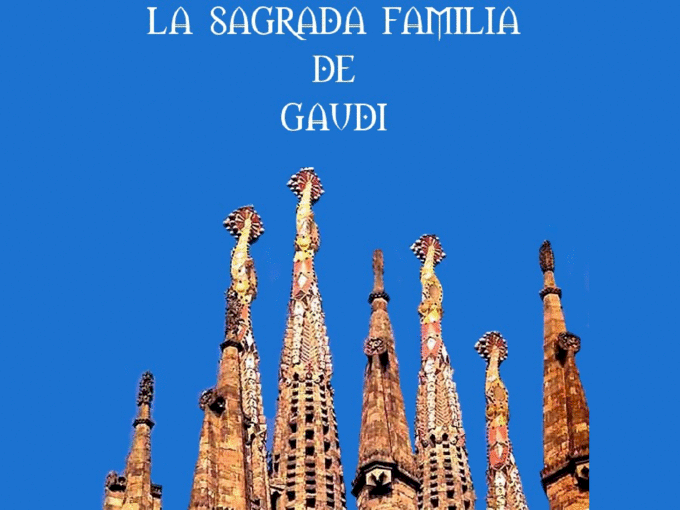
At this point, we had a clear idea of the construction method, but we didn’t know how to implement it. We had to go abroad to get acquainted with the best international practices in order to adapt them to the Sagrada Familia. For example, we were inspired by large skyscrapers that were built in a short time. How do they do it? If we could do the same with stone and steel, we would achieve our goal. In collaboration with construction and architecture firms around the world, we were able to define a model that would allow us to do this.
The steel we use is very special. It is called duplex steel and has very important characteristics of hardness and durability. It is very difficult to work with, and it is not widely used – very few people know how to use it.
“This is a great message of hope we want to send to the world: we have overcome the pandemic and now it’s time to step out of the darkness and move forward with this new light.”
Upcoming projects and ongoing work
How has the coronavirus pandemic affected Sagrada Familia? Are there any new projects currently being worked on?
The pandemic hit us hard. This misfortune did not leave us indifferent. We had to close our doors on March 13, 2020. We temporarily opened in July and August of the same year.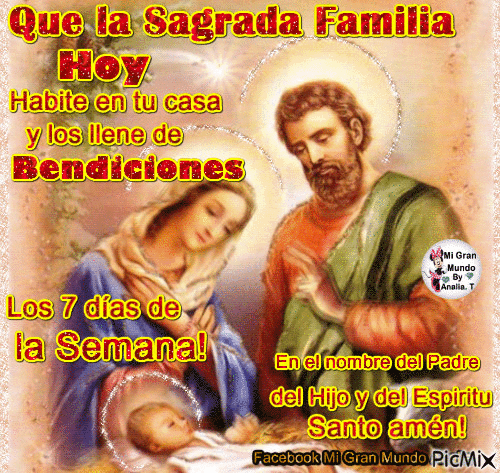
Our main source of income is tourism, that is, visitors who contribute to the construction of the temple with their entrance tickets. And the second source of donations, which also contribute to the design. But the difference is significant. Tourism brings in more than 90% of the income, and when we lost visitors, we had to stop construction. Sagrada Familia is like a big ocean liner. When he hits the brakes, it takes him many nautical miles to stop. The same thing happens when we start moving forward again and try to pick up the speed we had before the pandemic.
We are currently going through a valley moment in which we had to stop work and it will be very difficult for us to return to the 2019 construction rhythm. It is not possible to finish Sagrada Familia in 2026. This is the main impact of Covid-19 on the church. We are currently unable to determine a new date. We will only be able to do this when we reach pre-pandemic construction levels and can make an accurate estimate.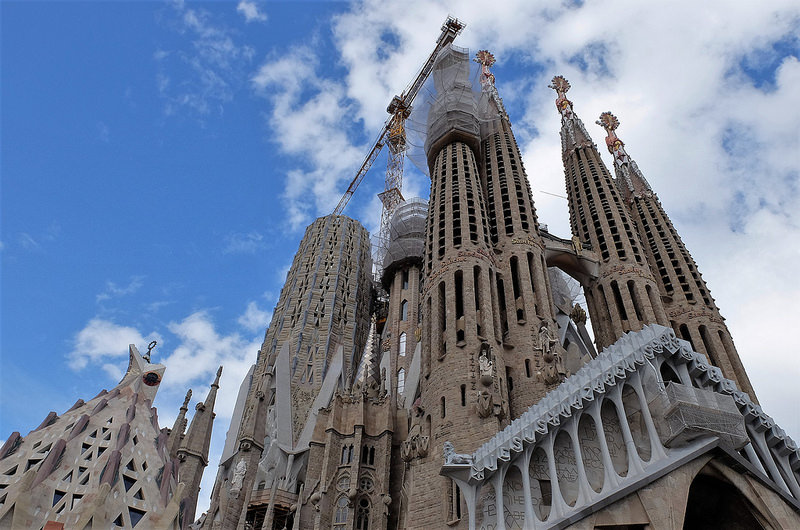
But the board of trustees not only did not fall into despondency and despondency, but also decided that in 2021 we should make great efforts to build one of the most symbolic towers of the Sagrada Familia – the tower of the Virgin Mary.
This was decided for two reasons. Firstly, for more than 100 years of construction, the Sagrada Familia has experienced many difficulties: wars, famines, hardships… But different patronages have always supported the construction and have always done something, even the smallest. The current Board of Trustees believes that, just as efforts were made in difficult times (even more difficult than the current ones), it is appropriate to do it again now.
And secondly, we think that now, when we are coming out of the pandemic and seeing the light at the end of the tunnel, it would be good to complete the construction of the tower, which is destined to be the crown of a big luminous star. In December 2021, we will light a star and send a message of hope and brightness to the world to welcome 2022.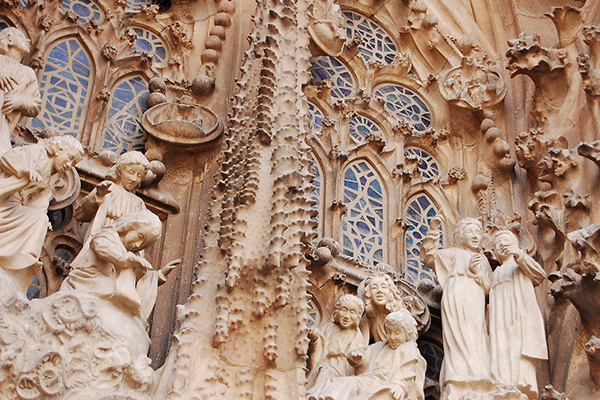
This is a great message of hope we want to send to the world: we have overcome the pandemic and now it is time to step out of the darkness and move forward with this new light.
The concept of the Virgin Mary Tower and its luminous star.
Tips for those thinking of visiting Barcelona
If someone is visiting Barcelona for the first time, Sagrada Familia should obviously be at the top of their list – but do you have any additional recommendations for visitors to the city? Are there other things not to be missed nearby?
Barcelona is a cozy, attractive, cosmopolitan city.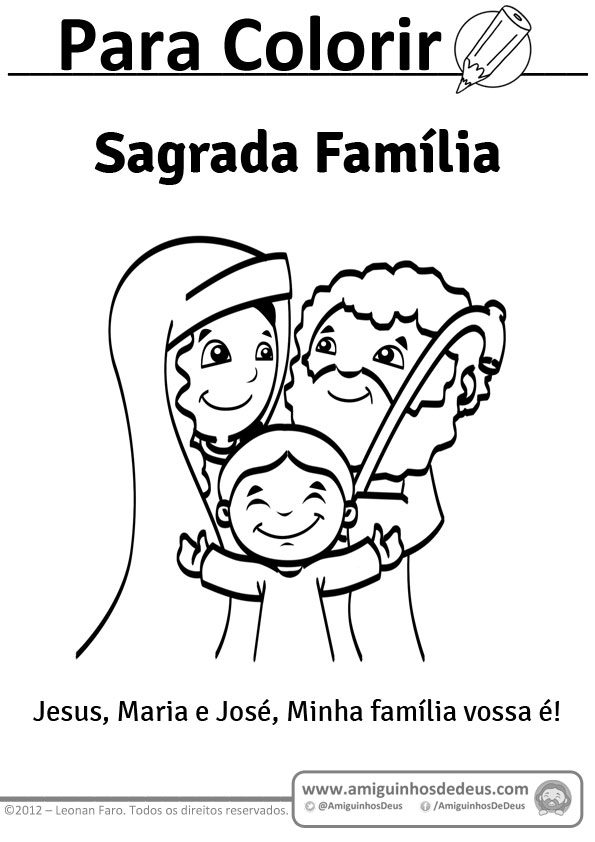
I don’t recommend anything specific, but I encourage everyone to come and experience the city in their own way.
In fact, we can say that in this sense, Barcelona is similar to the Sagrada Familia. It doesn’t matter what you’re looking for or where you’re from: one way or another, Barcelona, like Sagrada Familia, will be able to connect with you and offer you what you’ve been looking for.
Would you like to visit the beautiful Basilica of Barcelona? Every Sagrada Familia ticket sold helps fund the ongoing construction of this incredible building.

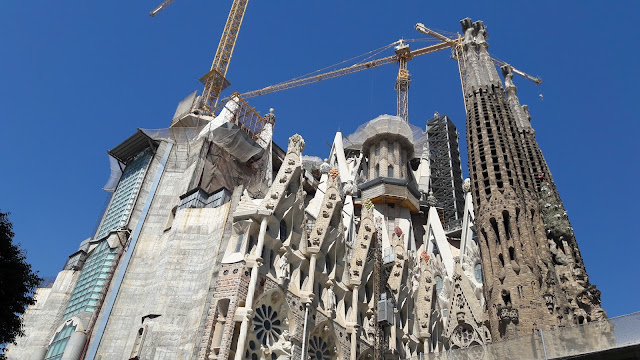 Early in the morning the light is cooler with blue and green tones being more common, while later in the day you’ll see more oranges, yellows and reds.
Early in the morning the light is cooler with blue and green tones being more common, while later in the day you’ll see more oranges, yellows and reds.

 The view is really worth it. This option doesn’t include the audio-app but it does include the audio guide of the Sagrada Família.
The view is really worth it. This option doesn’t include the audio-app but it does include the audio guide of the Sagrada Família.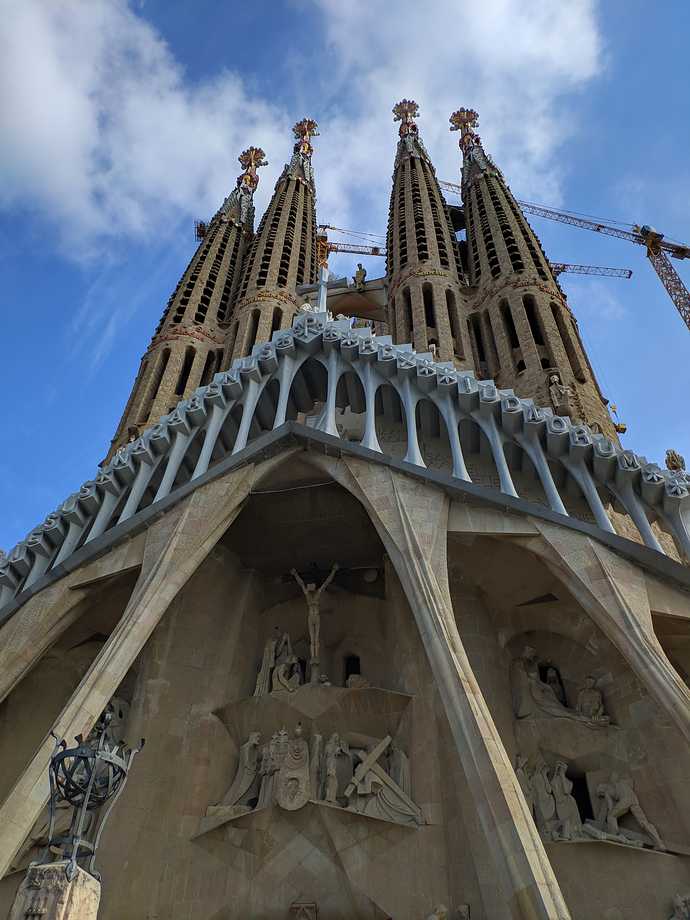 Use Google Maps to find the best route from your location.
Use Google Maps to find the best route from your location.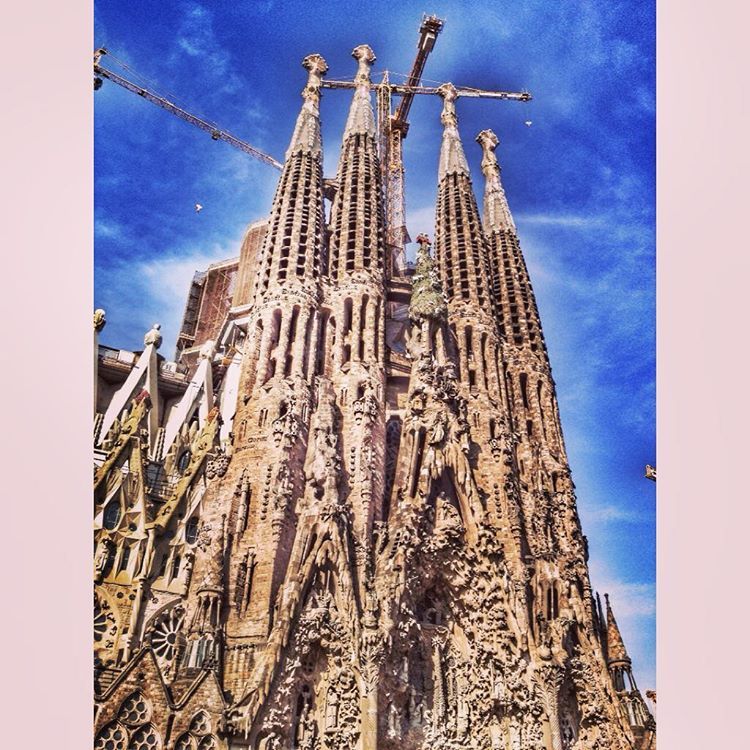
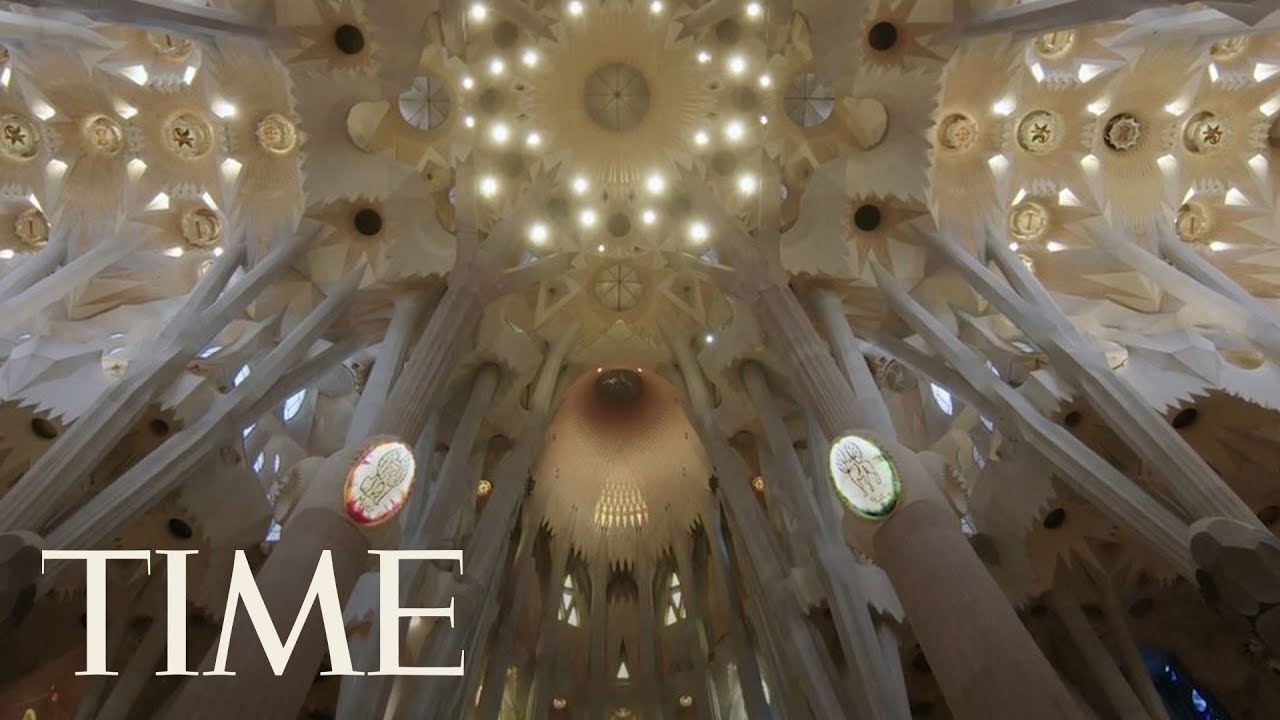
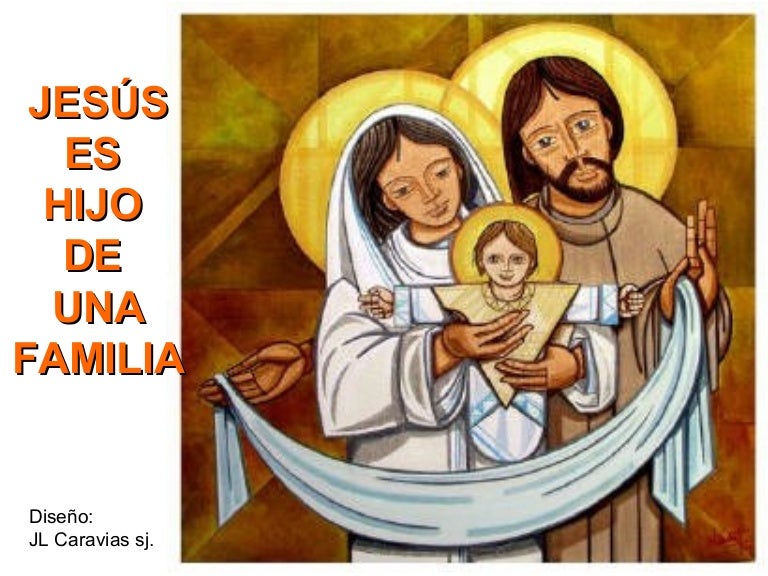
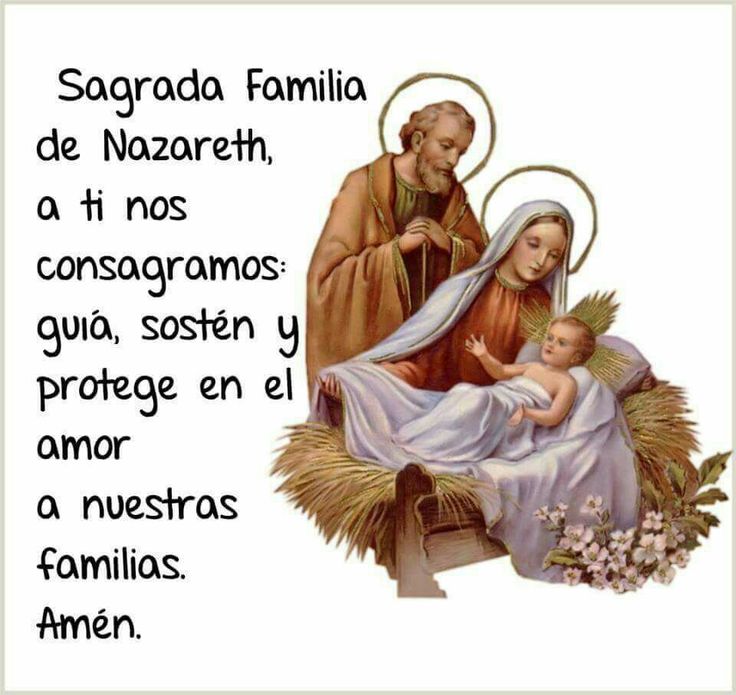 ”
” 